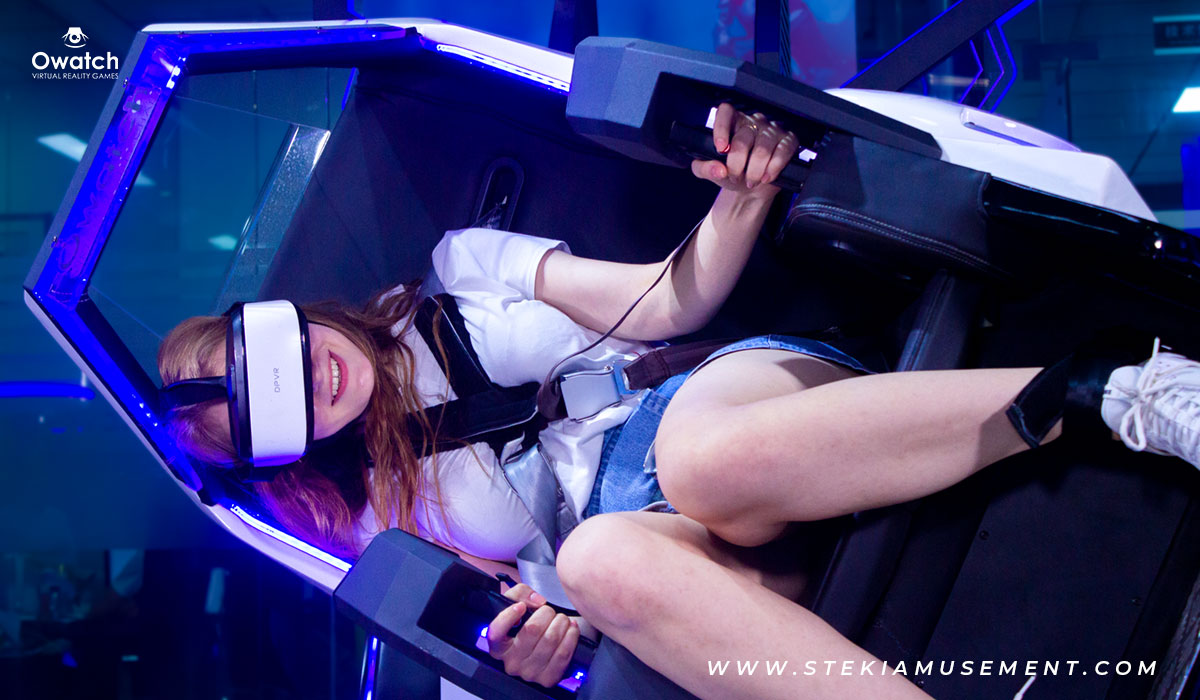What Causes Virtual Reality (VR) Motion Sickness?
Virtual reality (VR) may be the wave of the future for some people, but for others it may only feel like a wave of nausea.
VR gaming systems create an immersive simulation that provides the user with an out-of-body experience. VR games can be loads of fun. Unfortunately, some people who try VR get symptoms of motion sickness like:
- Nausea and Vomiting
- Queasiness
- Cold Sweats
- Dizziness
- Headache
- Fatigue
There’s no actual movement generated during a VR game. Even so, VR causes motion sickness for the same reason moving vehicles do.
Luckily, the same strategies that prevent and alleviate motion sickness in the real world can also be used to combat it in the virtual one.

What causes VR motion sickness?
When you’re playing a VR game, your eyes register the movements being simulated around you. These can be anything from comets whizzing by in virtual space to riding on a galloping unicorn. Your inner ears also sense that virtual movement is happening all around you.
But despite what’s being generated in your VR headset, the muscles and joints of your body sense that you’re sitting still, and not in motion.
Your eyes, inner ears, and body send these mixed messages to your brain simultaneously. Your brain becomes confused and disoriented, causing motion sickness to occur.
How is VR motion sickness different from other types?
VR game designers strive to create a phenomenon known as presence. Presence refers to the physical and mental sensations of “being there” instead of where you are, while playing a game.
It’s presence that makes well-designed VR experiences powerful and realistic. But it’s also what makes VR motion sickness feel the same as motion sickness generated by actual movement.
The only difference between VR motion sickness and other types is that there’s no actual motion occurring during a VR game.

How to make VR motion sickness stop
If you start to feel sick while playing a VR game, it may make sense to remove your headset and stop. Continuing the game while sitting or standing still will only prolong and worsen symptoms.
While not proven, some gamers say their symptoms subside if they get up and move around. This may help by syncing their motions to the action of the game, alleviating mixed signals to the brain.
VR motion sickness can last for hours. Some preventive at-home treatments can also be used to stop it once it starts:
Fresh air: It’s not fully understood why breathing in fresh, cool air alleviates motion sickness, but people often report feeling better once they do. If you’re inside, go outside and breathe some cool air. If you’re indoors, generate a breeze with a cooling fan.
Aromatherapy: Essential oils, like lavender and ginger, may help reduce nausea and dizziness. Try using a room diffuser or place a few drops on your wrists and gently breath in the scent.
Ginger: Ginger can help reduce nausea and may also have a calming effect. Try taking ginger supplements, chewing ginger candy, or drinking ginger tea. You can also peel and suck on fresh ginger root.
How to prevent VR motion sickness
ADJUST THE LENS OF YOUR VR HEADSET
Making sure it fits comfortably and you’ve correctly set the eye distance between lenses. Your aim here is to reduce the load on your brain. Having the headset positioned on your head properly can alleviate some of the most common motion sickness triggers by making the experience easier to digest. Adjusting your headset fit and the settings ensures you move your eyes as little as possible and goes a long way in preventing dizziness and headaches in VR land.
HAVE A REST FROM VR EVERY SEVERAL MINUTES
We should take a break from using VR headset here and there in the same way as we would from playing video games. Avid VR enthusiasts advise that you should have a break for 5 minutes after every 20-25 minutes. Certainly, this is one of the best ways to rest your eyes from heavy stress, eye strain and headaches.
MOVE YOUR EYES AT THE ADEQUATE SPEED
Have you ever thought how is using VR headset similar to riding a bike, driving a car or watching a 3D movie? In all those cases you should always look straight and never look in different directions. Otherwise you may get hit by other participants in the traffic.
When you wear a VR headset, your gaze should be really focused, especially if you are in the middle of fast-paced animation and if there are a plenty of moving objects. Not to mention that there is a higher likelihood that you will get the motion sickness or dizziness if your eyes are moving here and there. To avoid nausea, the best part of the screen to focus on is right in the middle.
MOVE LESS WHEN YOU ARE PLAYING
In the same way as your eyes should not move too much when you use a VR headset, your body should avoid unnecessary fidgeting. Extensive motion of your body will just lead you to becoming nauseous. The rule for your eyes can be perfectly applicable for your body: keep focusing on one particular point, move slowly to reduce pressure on your body and strain on your eyes. Simplicity and modesty in movements and reactions are the best ways to avoid VR sickness.
More detail at our website: www.stekiamusement.com
Add.: 3rd Floor, No.1 Rongling RD.,Zhushan, Shiqi, Panyu District, Guangzhou, Guangdong,China / PC:511450
Phone: +86 18922708522 +86 20 28991474
Facebook: https://www.facebook.com/Owatch-9D-Virtual-Reality-Simulator-811882662329537/
 Translate
Translate


